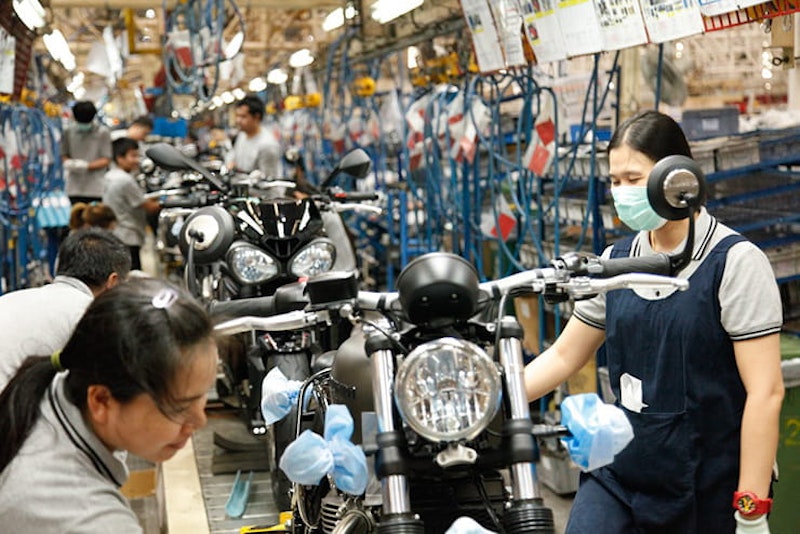
How to Paint Motorcycle Plastics: A Step-By-Step Guide?
Share
If you're a proud motorcycle owner, you know that custom aesthetics play a huge role in making your ride stand out from the crowd. Painting motorcycle plastics is not just about aesthetics; it's also about protection and longevity. In this detailed guide, we will delve deep into how to paint motorcycle plastics, providing you with all the information needed to achieve professional results right in your garage.
Whether you're a seasoned tech professional or an enthusiastic hobbyist, learning how to effectively paint motorcycle plastics can elevate your motorcycle's appearance while offering a fresh layer of protection against the elements. Let's kick off this journey to transform your bike.

Why Paint Motorcycle Plastics?
Motorcycle plastics face a lot of wear and tear. They are exposed to sunlight, dirt, and various weather conditions, leading to fading and discoloration over time. Painting them not only restores their original look but can also help protect against UV damage and other environmental factors. In addition, personalized paint jobs can reflect your style and make your motorcycle unique.
Things You Will Need
Before we dive into the painting process, lets gather the necessary materials:
- Plastic primer
- Spray paint specifically for plastics
- Clear coat for finishing
- Sandpaper (various grits)
- Masking tape and paper
- Protective gear (gloves, mask, goggles)
Preparing the Plastics
Preparation is key to ensuring an even and long-lasting finish. Follow these steps to prepare your motorcycle plastics:
1. Clean Thoroughly
Start by cleaning the plastics with soap and water to remove dirt, grease, and grime. For tougher stains, consider using a degreaser.
2. Sand the Surfaces
Using sandpaper, gently sand the surfaces of the plastics to create a rough texture. This helps the primer and paint adhere better. Aim for about 400-grit sandpaper.
3. Mask Off Areas
Use masking tape and paper to cover any areas that you dont want to paint, such as chrome parts or screws. Make sure the edges are pressed down firmly to avoid paint bleed.
Choosing the Right Paint
Choosing the right paint is crucial for achieving a professional finish. Heres what to consider:
1. Plastic-Specific Paint
Paint designed for plastics has special properties that allow it to adhere properly and flex with the plastic material. Look for reputable brands and colors that match your vision.
2. Color Options
From vibrant colors to classic blacks and whites, choose a color that complements your motorcycle and personality. Remember to check how many layers you might need for full opacity.
The Painting Process
Now that you're prepared, its time to start painting your motorcycle plastics!
1. Apply Plastic Primer
Shake the primer spray can thoroughly and hold it about 6-8 inches away from the surface. Apply a light, even coat, ensuring you cover all areas. Allow the primer to dry completely before the next step.
2. Spray Paint Application
Using the same distance, apply a thin first layer of color spray paint. Let it dry, then assess if a second or third coat is necessary for full coverage.
3. Clear Coat for Protection
Once your color coats are thoroughly dried, apply a clear coat to protect the paint and give it a glossy finish. Allow it to cure as per the manufacturer's instructions.
Common Mistakes to Avoid
Even experienced tech professionals can make mistakes when painting. Here are some common pitfalls to look out for:
1. Skipping the Primer
Using no primer can lead to poor adhesion and chipping paint later; always prime.
2. Not Enough Dry Time
Patience is crucial. Ensure that each layer dries properly before adding the next.
3. Ignoring Environmental Conditions
Humidity and temperature can affect paint drying. Always paint in a well-ventilated and suitable environment.
Final Touches and Reassembly
After everything has dried and cured as per instructions, carefully remove the masking tape and paper. Reassemble your motorcycle's components with care. Inspect your work to ensure that everything looks even and professional.
Maintaining Your Newly Painted Plastics
To prolong the life of your newly painted plastics, consider the following care tips:
- Wash with a gentle cleaner and microfiber cloth.
- Avoid power washing to prevent peeling or chipping.
- Apply wax periodically to add an extra layer of protection.
Additional Resources:

FAQs
1. Can I paint over the existing paint on my plastics?
Yes, but always sand and prime the surface first to ensure proper adhesion.
2. How long will the paint last on my motorcycle plastics?
With proper preparation and application, expect the paint to last several years, particularly if well-maintained.
3. What temperature is best for painting?
The ideal temperature is between 65F and 85F (18C to 29C) with low humidity.
